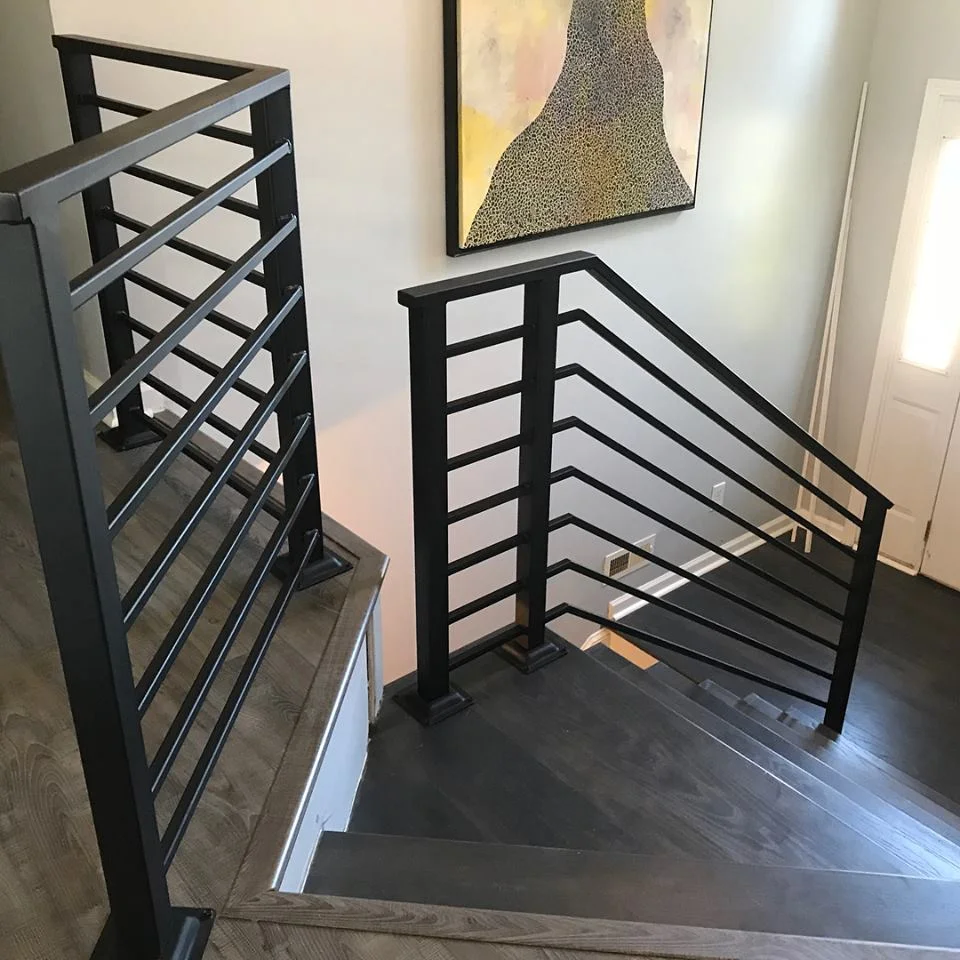Forged in Fire: The Art and Science of Handrail Fabrication
Crafting a handrail is more than just bending metal; it’s a blend of precision, creativity, and engineering that transforms raw materials into functional art. Whether it’s the sleek lines of modern designs or the intricate details of wrought iron classics, handrails are a cornerstone of safety and style in architecture.
Behind every curve and weld lies a fascinating process where craftsmanship meets science, ensuring durability and aesthetics work hand-in-hand. From selecting the right materials to mastering cutting-edge fabrication techniques, professionals in this field bring both artistry and expertise to their work.
What materials are commonly used in handrail fabrication?
Handrail fabrication utilizes various materials, offering unique aesthetics, durability, and strength benefits. Commonly used materials include:
Steel: Steel is one of the most popular handrail materials due to its strength and versatility. It can be welded into custom shapes and is highly durable, making it ideal for indoor and outdoor use. Steel handrails can be finished with powder coating or galvanized to prevent rust and corrosion.
Wrought Iron: Wrought iron is known for its elegant, decorative look and is often used in traditional or vintage-style designs. It is highly durable and can be shaped into intricate patterns. While strong, wrought iron requires regular maintenance to prevent rusting if exposed to the elements.
Aluminum: Aluminum is lightweight, corrosion-resistant, and easy to work with, making it a great choice for residential and commercial handrails. It's often used in outdoor or coastal environments because it doesn't rust like steel or iron. Aluminum handrails can be anodized or powder-coated for added protection.
Wood: Wood provides a warm, natural look and is commonly used in residential settings. It's ideal for indoor handrails and can be customized with stains or finishes. However, wood is less durable than metal and may require more maintenance, especially outdoors.
Glass handrails are often used in modern or minimalist designs to create an open, unobstructed view. Tempered glass panels are combined with metal or wooden supports to provide a sleek, contemporary aesthetic while maintaining strength and safety.
Stainless Steel: Stainless steel is highly durable, resistant to corrosion, and requires minimal maintenance. It is often used in contemporary and industrial-style handrails and is ideal for indoor and outdoor applications.
Cable Systems: Cable railings, often paired with steel or aluminum posts, are popular for providing an open and modern look while ensuring safety. The cables are tensioned between posts, creating a sleek, minimalist design without obstructing views.
Each material has unique qualities, and the choice depends on the handrail's desired style, location, and function.
How do blacksmiths shape metal into intricate handrail designs?
Blacksmiths shape metal into intricate handrail designs through skill, precision, and traditional techniques. The process typically involves the following steps:
Heating the Metal: Blacksmiths begin by heating the metal, typically iron or steel, in a forge until it reaches a malleable temperature. This makes the metal soft enough to be shaped without cracking. Depending on the size of the material, heating can take anywhere from a few minutes to over an hour.
Hammering and Forging: Once the metal is hot, blacksmiths use a hammer and anvil to shape the material. By striking the metal with force, they can elongate, flatten, or curve it into specific forms. The hammering process is repeated until the desired shape or design is achieved. Blacksmiths often create intricate patterns, twists, and scrolls by repeatedly bending, twisting, and shaping the metal.
Using Tools for Detail Work: For more complex designs, blacksmiths use specialized tools such as chisels, punches, and tongs to carve, engrave, or add texture to the metal. This step allows for creating detailed, decorative elements like curls, spirals, and leaves.
Cooling and Strengthening: After shaping the metal, it is cooled in water or air to harden it. Depending on the type of metal, some blacksmiths also employ heat treatment processes, such as quenching or tempering, to enhance the metal's strength.
Finishing Touches: The final step involves polishing and finishing the handrail to remove rough edges and create a smooth surface. Blacksmiths may also apply protective coatings, such as rust-resistant finishes, to ensure the handrail lasts and maintains its appearance.
By combining these techniques, blacksmiths can craft highly detailed and strong metal handrails, making each piece unique. Their expertise allows them to blend artistry with functionality, producing decorative and durable railing designs.
What safety precautions are essential during handrail fabrication?
Safety is a top priority during handrail fabrication, as the process involves working with heavy machinery, sharp tools, and high temperatures. Here are essential safety precautions that should be followed:
Personal Protective Equipment (PPE): Always wear appropriate PPE, including safety glasses or goggles, to protect your eyes from sparks, flying debris, or molten metal. Steel-toed boots help protect feet from falling objects, and gloves should be worn to handle hot or sharp materials. A flame-resistant apron or clothing is also recommended when working with hot metal.
Proper Ventilation: When working with welding, cutting, or grinding tools, ensure the workspace is well-ventilated to avoid inhaling fumes from burning metals or chemicals. Using a fume extraction system or working outdoors can help reduce exposure to toxic gases.
Fire Safety: Since handrail fabrication often involves heat, it's crucial to have fire extinguishers or fire blankets readily available. Ensure the work area is free from flammable materials, and keep a safe distance from combustible substances.
Tool and Equipment Maintenance: Regularly inspect and maintain tools and machinery to ensure they are in good working condition. Faulty equipment can lead to accidents, such as cuts, burns, or electric shocks.
Safe Handling of Hot Metal: Always use tongs or appropriate heat-resistant tools to handle hot metal. Never attempt to touch or move hot materials by hand; always allow the metal to cool before handling it.
Proper Lifting Techniques: When moving heavy materials or equipment, use proper lifting techniques or mechanical aids, such as hoists or cranes, to prevent back injuries or accidents.
Training and Supervision: Ensure that everyone involved in the fabrication process is properly trained in tool usage, safety protocols, and emergency procedures. Supervisors should oversee tasks to ensure safety measures are being followed.
By following these precautions, fabricators can reduce the risk of accidents, protect their health, and ensure a safer working environment during handrail fabrication.
What are the historical origins of handrail craftsmanship?
The craftsmanship of handrails has deep historical roots, with their origins tied to the development of architecture, safety, and aesthetics. Here are key points about the historical evolution of handrail craftsmanship:
Ancient Civilizations: Early handrails can be traced back to ancient civilizations, such as the Egyptians and Greeks, where they were primarily functional rather than decorative. Handrails were used in stairways, temples, and structures to provide safety and stability. They were often made from stone or wood and featured simple, practical designs.
Roman Influence: The Romans expanded the use of handrails in public and private spaces, incorporating them into grand staircases, basilicas, and aqueducts. Roman handrails were often made from stone or metal, with ornate designs that reflected Roman artistry and craftsmanship. The emphasis on safety and accessibility in Roman architecture laid the groundwork for more intricate handrail designs.
Medieval and Renaissance Eras: During the Middle Ages and Renaissance, handrails became more decorative, reflecting the craftsmanship of the time. Wrought iron and wood were commonly used, with handrails often featuring elaborate carvings, scrollwork, and ornamental details. They became functional symbols of wealth and status in castles, palaces, and churches.
Industrial Revolution: With the Industrial Revolution came mass-produced materials like cast iron, which allowed for more intricate and uniform handrail designs. This period saw the rise of Victorian-era balustrades, with elaborate ironwork and detailed patterns becoming popular in urban architecture and public buildings.
Modern Era: In the 20th and 21st centuries, handrail craftsmanship became increasingly diverse, with materials like stainless steel, glass, and aluminum being introduced. Modern techniques like welding, laser cutting, and CNC machining have allowed for precise, intricate, and customizable designs, merging aesthetics with function.
Handrail craftsmanship has evolved from simple safety features to works of art that reflect cultural, architectural, and technological advancements throughout history.
Discover the Art and Craft of Handrail Fabrication
Discover the art and craft of handrail fabrication with Master Fabrication! Our skilled artisans combine traditional techniques with modern technology to create custom handrails that are both beautiful and functional.
Whether you need a simple, classic design or an intricate, decorative railing, we specialize in working with various materials such as steel, wrought iron, aluminum, and wood. Each handrail is meticulously forged and finished to ensure durability, safety, and visual appeal. Let us bring your vision to life with expertly crafted handrails that enhance your space. Contact Master Fabrication today to get started!

